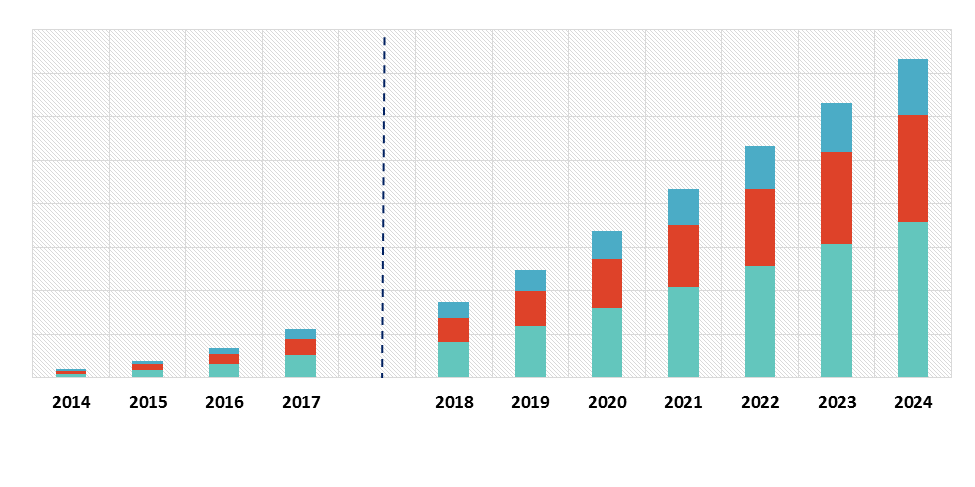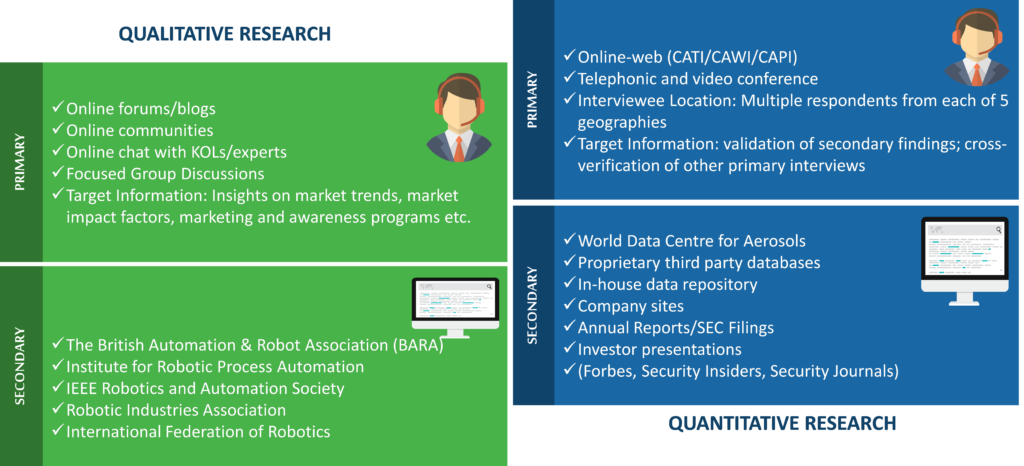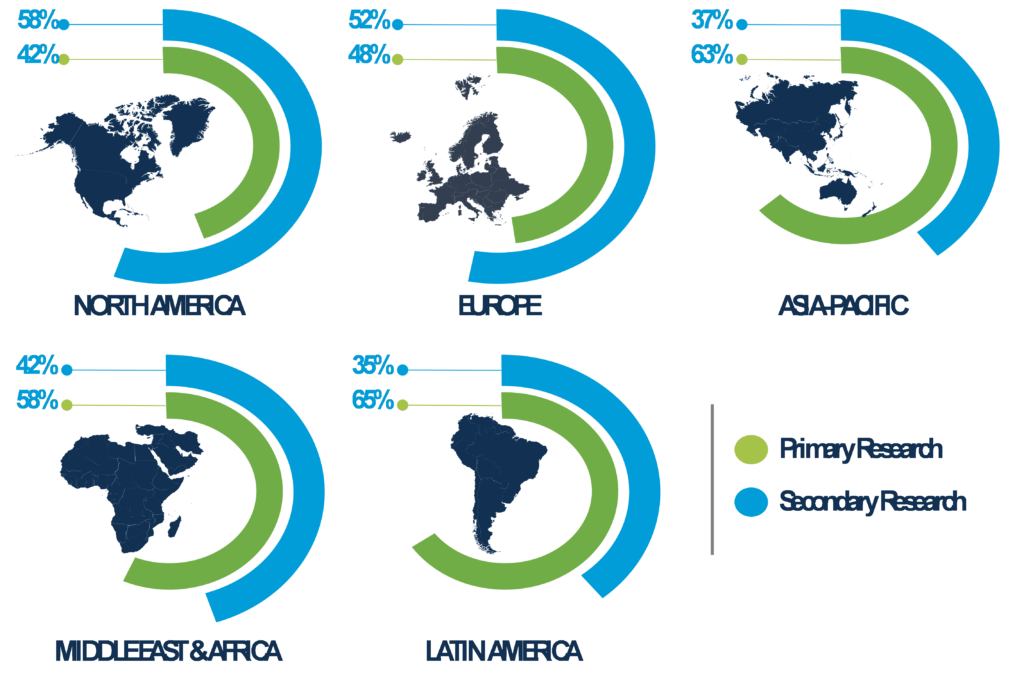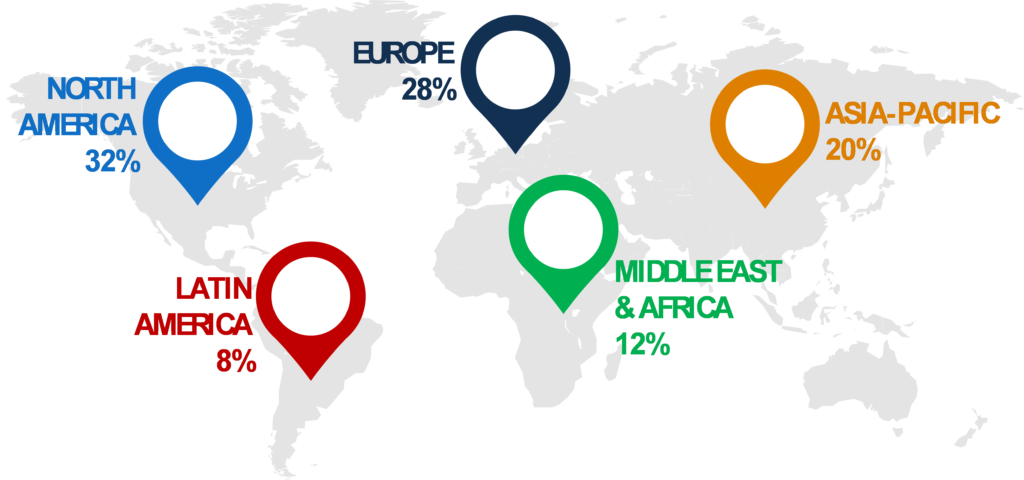Robotic Process Automation

Global Robotic Process Automation Market By Process (Automated Solution, Decision Support & Management, Interaction Solution) By Industry (Banking, Financial Service And Insurance (BFSI), Telecom & IT, Retail And Consumer Goods, Manufacturing, Healthcare And Pharmaceuticals) Forecast & Opportunities, 2018-2024
- Published Date: June 2018
- Report ID: BWC1804
- Available Format: PDF
- Page: 226
Report Overview
Global Robotic Process Automation Market: Overview
Continuous advancement in AI and cognitive computing escalates market growth. With growing advancement in Artificial intelligence & cognitive computing, which include machine learning techniques and greater computational power, Robotic process automation is also gaining traction and is anticipated to show robust growth in the years to come. Earlier AI & RPA were considered as two different technologies, but now they are complimenting each other to process huge volumes of data and providing better decision making for organizations. Cognitive-based computing which includes adaptive learning, speech recognition, and pattern identification algorithm is inherited in robotic process automation to transform business and taking the organization to the next level. The study reveals that the global RPA market is expected to cross USD7, 000 Million by 2024, with a CAGR over 27% during the forecast period. Due to significant growth in technologies such as artificial intelligence (AI) and cognitive learning, the adoption of business automation technologies by enterprises has also increased. This has led to a rapid increase in demand for a virtual workforce to eliminate repetitive human efforts, on the back of which, the global robotic process automation market is gaining traction.
Global Robotic Process Automation Market: Research Summary
According to BlueWeave Consulting, the key findings of the report “Global Robotic Process Automation Market Size, Share, Development, Growth and Demand Forecast to 2024” are:
·
As per the findings of the research, ‘Rule-based
operations’ have been the largest revenue generators in the global robotic
process automation market, as compared to ‘Knowledge-based operations’. The
rule-basedoperation has gained significant interest from all sized enterprises
as it enables organizations to configure software robots that effectively
automate various annual and highly repetitive tasks. It also helps the
organization, saving their time by completing an actual human task within a
fraction of second. The market for rule based operations is expected to
continue its dominance, during the forecast period, as it can easily be
integrated within a business ecosystem without disrupting the traditional or
legacy business framework.
·
Geographically, North America has been the
largest market for robotic process automation, whereas Asia-Pacific is expected
to witness the fastest growth among all regions, during the forecast period.
The anticipated growth in the market can be attributed to factors such as
advancement in new technologies, growing digitalization, growth in the
automation software industry, and increasing adoption of business process
automation solutions by small and medium scale enterprises in the region.
·
Further, due to increase in demand for
automation in major industry tasks such as business process outsourcing (BPO),
outbound sales and other back-office work will adopt robotic process automation
solutions in the next few years.
Global Robotic Process Automation Market: Market Dynamics
Global robotic process automation market is anticipated to show double-digit growth during the forecast period. The market is expected to trend incline towards RPA owing to the reduction in workforce cost coupled with rise in adoption process. The major factor that will drive the robotic process automation market further includes surge in demand for virtual workforces along with ease of doing business. However, constant change in automation technology and unavailability of the technical workforce may hinder the growth of the global RPA market in the coming years. Some of the major trends observed in this market are the evolution of robust software platforms, overall cost reduction related to workforce and continuous advancement in fields of AI and cognitive computing.
Global Robotic Process Automation Market, Revenue Forecast, USD (Million), 2014-2024
Global Robotic Process Automation Market: Research Methodology
Extensive secondary research was conducted using paid data sources including Bloomberg, Factiva, Capital IQ, OneSource, and Hoovers. Additionally, several publicly-available data sources were used including journals, statistics articles, and industry associations. These data sources were used to gather relevant information to develop an understanding on the global robotic process automation market. The research was conducted covering the desk research and primary research. Data sources used for primary research included online forums and blogs, CATI/CAWI, CAPI interviews, and video conferences. Additionally, interviews were conducted through connecting with various industry respondents including C-level executives, directors, divisional heads, regional heads, expert consultants, and independent consultants. The primary research was conducted to gain market insights from industry respondents and validate the gathered information through desk research.
Global Robotic Process Automation Market: Competitive Dynamics
The research states that the global robotic process automation market is highly competitive, with players developing new robotic process automation applications. Some of the key players operating in the robotic process automation ecosystem are Nice Systems Ltd., Pegasystems Inc., Automation Anywhere, Blue Prism PLC, Ipsoft, Inc., Celaton Ltd., Redwood Software, Uipath SRL, Verint System Inc., Xerox Corporation, and IBM Corporation. Most of the major vendors in the global robotic process automation market are actively focused on enhancing their offerings to meet the ongoing demand for advanced business automation solutions. This includes software integrated with artificial intelligence and cognitive learning.
-Chapter 1. Research Objective
1.1. Objective of the Study
1.2. Market Definition
1.3. Process Overview
1.4. Market Scope
1.3.1. Market Segmentation by Process
1.3.2. Market Segmentation by Operation
1.3.3. Market Segmentation by Service
1.3.4. Market Segmentation by User Size
1.3.5. Market Segmentation by Industry
1.5. Analysis Period of the Study
1.6. Data Reporting Unit
1.7. Key Stakeholders
Chapter 2. Research Methodology
2.1. Research Methodology
2.2. Regional Split of Primary and Secondary Research
2.3. Secondary Research
2.4. Primary Research
2.2.1. Breakdown of Primary Research Respondents
2.2.1.1. By Region
2.2.1.2. By Industry Participants
2.3. Market Size Estimation
2.4. Assumptions for the Study
2.5. Market Breakdown and Data Triangulation
Chapter 3. Executive Summary
Chapter 4. Market Introduction
4.1. Introduction
4.1.1. Overview by Product
4.1.2. Overview by Operation
4.1.3. Overview by Service
4.1.4. Overview by User Size
4.1.5. Overview by Industry
4.2. Value Chain Analysis
4.3. Market Dynamics
4.3.1. Trends
4.3.2. Drivers
4.3.2.1 Impact analysis of Drivers
4.3.3. Restraints
4.3.3.1 Impact Analysis of Restraints
4.3.4. Opportunities
4.4. Porter’s Five Forces Analysis
4.4.1. Bargaining Power of Supplier
4.4.2. Bargaining Power of Buyers
4.4.3. Threat of New Entrants
4.4.4. Threat of Substitute
4.4.5. Intensity of Rivalry
Chapter 5. Market Size and Forecast by Process
Chapter 6. Market Size and Forecast by Operations
Chapter 7. Market Size and Forecast by Service
Chapter 8. Market Size and Forecast by User Size
Chapter 9. Market Size and Forecast by Industry
Chapter 10. Market Size and Forecast by Geography
10.1. North America
10.2. Europe
10.3. Asia-Pacific
10.4. Middle-East & Africa
10.5. Latin America
Chapter 11. Market Competitiveness
11.1. Market Landscape
11.2. Market Player Analysis
11.3. Recent Activities of Major Players
11.3.1. Partnerships
11.3.2. Product Launch
11.3.3. Others
Chapter 12. Company Profiles
12.1. Nice Systems Limited
12.2. Pegasystems Inc.
12.3. Automation Anywhere Inc.
12.4. Blue Prism Limited
12.5. Celaton Limited
12.6. Redwood Software Inc.
12.7. Ipsoft Inc.
12.8. UiPath
12.9. Zerox Corporation
12.10. IBM Corporation
Chapter 13. Appendix
Market Segmentation
1. Research Methodology

2. Regional Split of Primary & Secondary Research

3. Secondary Research
The research process began with obtaining historical market sizes of the entire Robotic Process Automation market and the share of each type of segmentation, through exhaustive secondary research to understand the potential of the market under the prevailing market environment during the past years. The growth rate of the market and its segments was studied with a comparative approach to understand the impact of factors that shaped the market during the recent past.
The next step involved the study of present market environment that is influencing the Robotic Process Automation market and its expected long-term impact. Weightage was given to several forces that are expected to affect the home security market, during the forecast period. Based on the interim analysis, the market numbers were formulated for each of the forecast years for every segment.
4. Primary Research
Various industry experts including CEOs, presidents, vice presidents, directors, sales managers, products managers, organization executives and other key people of the global Robotic Process Automation security market were interviewed. The third step involved validation of hypothesis through segmented primary research with the key opinion leaders in the industry, including the company representatives, experts from distributer agencies, service providers and other industry experts. The primary research helped in assessing the gathered and assumed data with the real-time experience of industry representatives. This also led to modification in certain assumptions that were taken during the process of preliminary research. The analysts arrived at solid data points after the completion of primary research process.
In the fourth step, the market engineering was conducted, where the data points collected through secondary and primary sources were compiled to compute the final market sizes.
4.1 Breakdown of Primary Research Respondents, By Region

4.2 Breakdown of Primary Research Respondents, By Industry Participants

5. Market Size Estimation
Top-down approach has been followed to obtain the market size by region, and by country. Bottom-Up approach has been followed to obtain market size by process and by industry. An amalgamation of bottom-up and top-down approach has been performed to determine the revenue.
6. Assumptions for the Study
- The macro-economic factors would remain same during the forecast period.
- The market players would exhibit consistent performance during the forecast period without having any adverse ripple effects on the industry.
To request a free sample copy of this report, please complete the form below.
We value your investment and offer free customization with every report to fulfil your exact research needs.
RELATED REPORTS
WHY CHOOSE US
-

24/7 Research support
Get your queries resolved from an industry expert. Request for a free product review before report purchase.
-

Coustom Research Service
Ask the Analyst to customize an exclusive study to serve your research needs
-

Quality & Accuracy
Ask the Analyst to customize an exclusive study to serve your research needs
-

Data Visualization
As the business world is changing dynamically every day. We need to stay pin point in relation to data management and optimum data utilization
-

Information security
We never share your personal and confidential information. Your personal information is safe and secure with us.


